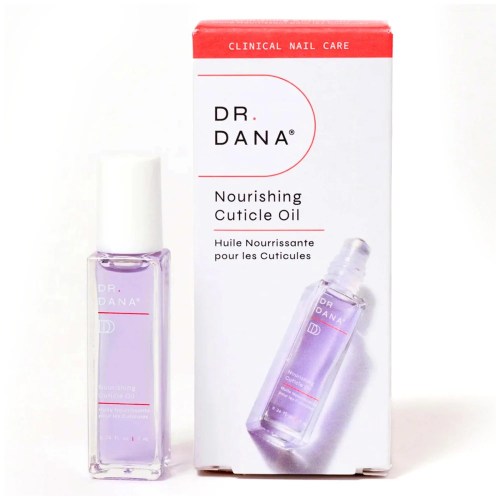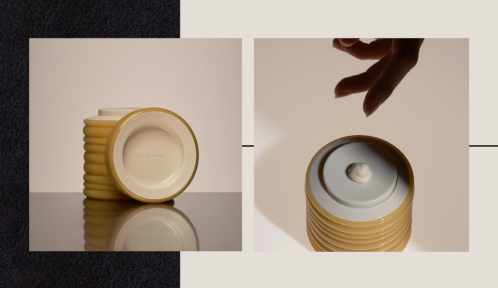Our editors independently select these products. Making a purchase through our links may earn Well+Good a commission
Whether they’re done at home or the hands of a professional, most of us think of our regular manicures and pedicures as a way to make our nails look their best. But while a quick file and a coat of polish can do wonders in transforming a tattered, naked set into a full-blown work of art, they’re far from the most important part of the process. Taking care of your nails is tantamount to keeping them healthy, and a big part of that requires giving your cuticles a little extra TLC. The good news? You don’t need to spend a fortune for an expert-approved treatment. In fact, the best solution for how to heal cuticles may already be hanging around in your bathroom. To help, we tapped Dana Stern, MD, a board-certified dermatologist who specializes in nail care, for her approved tips for healing and caring for cuticles.
Experts in This Article
board-certified dermatologist and nail specialist
manicurist at Nail Lounge of La Jolla
What are cuticles?
Your cuticles are located at the base of your nail—where the nail plate meets the skin—and are made up of thin layers of dead skin cells. These cells create a barrier between the outside world and the delicate skin and tissue under the nail (known as the eponychium) which work to keep the nail matrix healthy.
With that in mind, it can be helpful to think of your cuticle as your nail’s protective seal. “It’s like the grout between the tiles in your shower: It keeps water, moisture, and organisms our of the nail unit,” Dr. Stern explains.
Why it’s important to care for your cuticles
When that “seal” isn’t functioning properly—which can happen if it’s dry, dehydrated, or if you cut your cuticles (more on that in a few)—it makes it a whole lot easier for those external factor to enter your nail and cause problems. “This can include chronic paronychia—which is redness and swelling of the skin behind the cuticle,” says Dr. Stern. “If the cuticle compromise persists chronically, the nail will eventually grow in irregularly with things like white patches, bumps, thickening, and discoloration.”
While your cuticles certainly get some care during a pro-grade manicure, Dr. Stern notes that they need a little more love on the reg. “It’s not enough to have a manicure and leave them untouched for the rest of the week,” she says. “Cuticle oils and/or ointments should be applied daily—or more, if needed—just like you apply moisturizer to your face every day.”
How cuticles become dry and damaged
Considering how much our hands go through on a day-to-day basis, it’s normal to experience some regular wear and tear to your cuticles. For the most part, this emerges in the form of dryness. Things like sun exposure, aggressively washing with harsh soaps, and being out in cold, dry air can cause skin to become dehydrated, which in turn leads to dry cuticles.
“When the cuticle dries out from things like excessive hand washing, hand sanitizer, and swimming in chlorine, the cuticle can separate and peel, and a hang nail can form more easily,” says Dr. Stern. “These detached segments of cuticle are also often a stimulus for biting and picking and so prevention is the best solution.”
While general dryness on your cuticles is fairly common and shouldn’t be cause for any real concern (unless, of course they go untreated), there are certain damage-inducing practices that can really wreak havoc on the area. The most problematic, according to Dr. Stern, is removing the cuticle entirely. “Often in the salon, the cuticle is aggressively removed with either a cuticle nipper or a liquid cuticle remover, both of which are equally potentially damaging,” she says. “If done repetitively this technique will usually result in entry of yeast which results in chronic paronychia, which is a type of nail infection.”
There are other sorts of harsh treatments that can cause damaged cuticles, too. “Aggressive exfoliation and cutting at the skin around the nail can result in pigment changes to the skin, especially in darker skin types,” says Dr. Stern. “I see this in people who chronically pick their cuticles, and if done routinely, Russian manicures could result in these similar pigment alterations.”
Signs of damaged cuticles
1. Hang nails
When cuticles are dry, hang nails can form more easily. “These detached segments of cuticle are often a stimulus for biting and picking, so preventing them is the best solution,” says Dr. Stern. “Biting and picking can lead to infections, some of which can be bacterial infections that require medical attention including drainage and antibiotics.”
2. Chronic paronychia
Chronic paronychia is a skin infection in which the skin behind the cuticle becomes puffy, swollen, and pink or red. It tends to last for six weeks (or more), and requires proper treatment to avoid more significant issues.
How to fix dry cuticles
Obviously, the best way to keep your cuticles healthy is by try to avoid damaging them in the first place. In addition to avoiding harsh practices and removing them altogether, “Keeping your cuticles healthy means keeping them hydrated,” says Dr. Stern. “Hydration will be a key part of the routine and it will be essential to use products that are formulated with science backed ingredients that are effective for skin around the nail.”
This means regularly applying an ointment or serum, even when your nails are in tip-top shape. Dr. Stern recommends the award-winning Nourishing Cuticle Oil ($18) from her namesake line, but one of the best products for the job may already be in your arsenal (and costs under $4).
“People think they need fancy products or serums or tools for their nails, but most of the time, simple is better, and you don’t need to spend a lot of money to get good results,” says Vivian Nguyen, a manicurist at Nail Lounge of La Jolla in La Jolla, CA. “Vaseline works so well for so many things. I use it literally all the time.”
This manicurist favorite turns out to also be a derm favorite, too—and the American Academy of Dermatology seconds Nguyen’s recommendation for using it on your cuticles. The budget-friendly petroleum jelly product can be used on its own, but can also be layered over a cuticle oil in the treatment and deliver even more intense nourishment.
For best results, Dr. Stern recommends using a washcloth (not a wooden stick) to gently push them back in the shower when your skin is wet and slightly more malleable, then applying your cuticle-care routine after your shower and throughout the day as needed.

Vaseline, Petroleum Jelly — $4.00

Dr. Dana Nails, Nourishing Cuticle Oil — $18.00

Typology, L93-Hand & Nail Serum — $30.00

L'Occitane, Strengthening Shea Nail and Cuticle Oil — $22.00
How to heal damaged cuticles
If your cuticle damage is more intense than your standard-issue dryness, there are a few more things you can do in addition to regularly applying hydrating products. “If the cuticle is compromised and you have swelling, redness, or irritation, it’s best to keep the nails and cuticle clean and dry—wear gloves with any wet work like dishes, laundry, cleaning, and gardening, as water will be more prone to enter the nail unit,” says Dr. Stern. “Polish remover will be potentially irritating if the cuticles are damaged and not intact and so avoiding nail cosmetics would be advisable while the cuticle is repairing itself.”
Even the prettiest polish becomes pointless when the nails beneath it are tattered an unhealthy, so take the time to care for your cuticles to make every manicure really count.
Sign up for the Well+Good SHOP Newsletter
Get exclusive deals on wellness, beauty, fitness, and food products that have been hand-picked by our editors.
Got it, you've been added to our email list.










